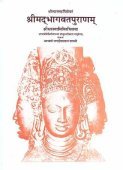Syamantaka, Syamamtaka: 10 definitions
Introduction:
Syamantaka means something in Hinduism, Sanskrit. If you want to know the exact meaning, history, etymology or English translation of this term then check out the descriptions on this page. Add your comment or reference to a book if you want to contribute to this summary article.
In Hinduism
Purana and Itihasa (epic history)
Source: archive.org: Puranic EncyclopediaSyamantaka (स्यमन्तक).—A divine jewel. (For further details see under Prasena).
Source: Cologne Digital Sanskrit Dictionaries: The Purana IndexSyamantaka (स्यमन्तक).—A jewel presented by the Sun god to Satrājita (s.v.) to enable him to see his form distinctly without being blinded by his hallow; had the quality of yielding eight loads of gold every day. Kṛṣṇa thought that Ugrasena was worthy of having it; knowing this Satrājit gave it to his brother Prasena. He placed it in a room and hedged it with divinity. Kṛṣṇa asked for it and was refused. It was taken to the forest by Prasena whom a lion killed. Jāmbavā killed the lion and got the jewel. Kṛṣṇa fought with him and recovering the jewel, returned it to Satrājita in a public assembly. Satrājita offered his daughter in marriage to Kṛṣṇa and made a gift of the jewel. Kṛṣṇa returned it to Satrājita. Śatadhanvan killed Satrājita and took it, and placed it with Akrūra for safe custody. This led to some misunderstanding between Kṛṣṇa and Rāma, and at Kṛṣṇa's request, Akrūra made it public that it was in his possession.*
- * Bhāgavata-purāṇa X. 37. 18; cch. 56 and 57 (whole); Brahmāṇḍa-purāṇa III. 71. 26, 52, 82, 98. Matsya-purāṇa 45. 4-17; Vāyu-purāṇa 96. 25-58. Viṣṇu-purāṇa IV. 3. 14-62, 151-161.

The Purana (पुराण, purāṇas) refers to Sanskrit literature preserving ancient India’s vast cultural history, including historical legends, religious ceremonies, various arts and sciences. The eighteen mahapuranas total over 400,000 shlokas (metrical couplets) and date to at least several centuries BCE.
Languages of India and abroad
Sanskrit dictionary
Source: DDSA: The practical Sanskrit-English dictionarySyamantaka (स्यमन्तक).—A kind of valuable gem (said to yield daily eight loads of gold and to preserve from all kinds of dangers and portents); Bhāgavata 1.56. (For some account, see the word satrājit).
Derivable forms: syamantakaḥ (स्यमन्तकः).
Source: Cologne Digital Sanskrit Dictionaries: Shabda-Sagara Sanskrit-English DictionarySyamantaka (स्यमन्तक).—m.
(-kaḥ) The gem worn by Krishna. Formerly the gem was given to Satrajit by the sun, and transferred by him to his brother Prasena, from whom it was taken by Jambavat. After much fighting it was appropriated by Krishna.
Source: Cologne Digital Sanskrit Dictionaries: Benfey Sanskrit-English DictionarySyamantaka (स्यमन्तक).—m. The gem worn by Kṛṣṇa.
Source: Cologne Digital Sanskrit Dictionaries: Aufrecht Catalogus CatalogorumSyamantaka (स्यमन्तक) as mentioned in Aufrecht’s Catalogus Catalogorum:—See Vedāntasyamantaka.
Source: Cologne Digital Sanskrit Dictionaries: Monier-Williams Sanskrit-English DictionarySyamantaka (स्यमन्तक):—m. Name of a celebrated jewel (worn by Kṛṣṇa on his wrist cf. kaustubha, described as yielding daily eight loads of gold and preserving from all dangers; it is said to have been given to Satrā-jit q.v. by the Sun and transferred by him to his brother Prasena, from whom it was taken by Jāmbavat, and after much contention appropriated by Kṛṣṇa See, [ViṣṇuP. iv, 13]), [Harivaṃśa; Purāṇa; Pañcarātra]
Source: Cologne Digital Sanskrit Dictionaries: Yates Sanskrit-English DictionarySyamantaka (स्यमन्तक):—(kaḥ) 1. m. The gem worn by Krishna.
[Sanskrit to German]
Sanskrit, also spelled संस्कृतम् (saṃskṛtam), is an ancient language of India commonly seen as the grandmother of the Indo-European language family (even English!). Closely allied with Prakrit and Pali, Sanskrit is more exhaustive in both grammar and terms and has the most extensive collection of literature in the world, greatly surpassing its sister-languages Greek and Latin.
Kannada-English dictionary
Source: Alar: Kannada-English corpusSyamaṃtaka (ಸ್ಯಮಂತಕ):—[noun] (myth.) a particular gem that was supposed to yield gold every day.
Kannada is a Dravidian language (as opposed to the Indo-European language family) mainly spoken in the southwestern region of India.
See also (Relevant definitions)
Starts with: Syamantakamaniharana, Syamantakaprabandha.
Query error!
Full-text (+23): Syamantakaprabandha, Vedantasyamantaka, Jambavat, Syamantakamaniharana, Prasena, Syamantakopakhyana, Cimantakam, Satrajit, Shamantakastotra, Camantakam, Jambavati, Yadavasamaja, Mahabhoja, Hali, Siddhantaratna, Mahavinayakacaturthi, Govindabhashya, Sahityakaumudi, Siddhantadarpana, Kavyakaustubha.
Relevant text
Search found 33 books and stories containing Syamantaka, Syamamtaka, Syamaṃtaka; (plurals include: Syamantakas, Syamamtakas, Syamaṃtakas). You can also click to the full overview containing English textual excerpts. Below are direct links for the most relevant articles:
Garga Samhita (English) (by Danavir Goswami)
Verse 6.19.41 < [Chapter 19 - In the First Fortress of Dvārakā, the Glories of Līlā-sarovara, etc.]
Verse 6.20.3 < [Chapter 20 - In the Description of the Second Fort, the Glories of Indra-tīrtha, etc.]
Verse 6.8.2 < [Chapter 8 - The Marriages of All the Queens]
Bhakti-rasamrta-sindhu (by Śrīla Rūpa Gosvāmī)
Verse 2.4.50 < [Part 4 - Transient Ecstatic Disturbances (vyābhicāri-bhāva)]
Verse 2.4.20 < [Part 4 - Transient Ecstatic Disturbances (vyābhicāri-bhāva)]
Verse 2.5.69 < [Part 5 - Permanent Ecstatic Mood (sthāyī-bhāva)]
Notices of Sanskrit Manuscripts (by Rajendralala Mitra)
Bhagavata Purana (by G. V. Tagare)
Chapter 56 - Kṛṣṇa’s marriage with Jāmbavatī and Satyabhāmā < [Book 10 - Tenth Skandha]
Chapter 57 - Murder of Satājit for Syamantaka < [Book 10 - Tenth Skandha]
Chapter 37 - Slaying of Asuras Keśin and Vyoma < [Book 10 - Tenth Skandha]
Puranic encyclopaedia (by Vettam Mani)
Brahma Purana (by G. P. Bhatt)
Related products
